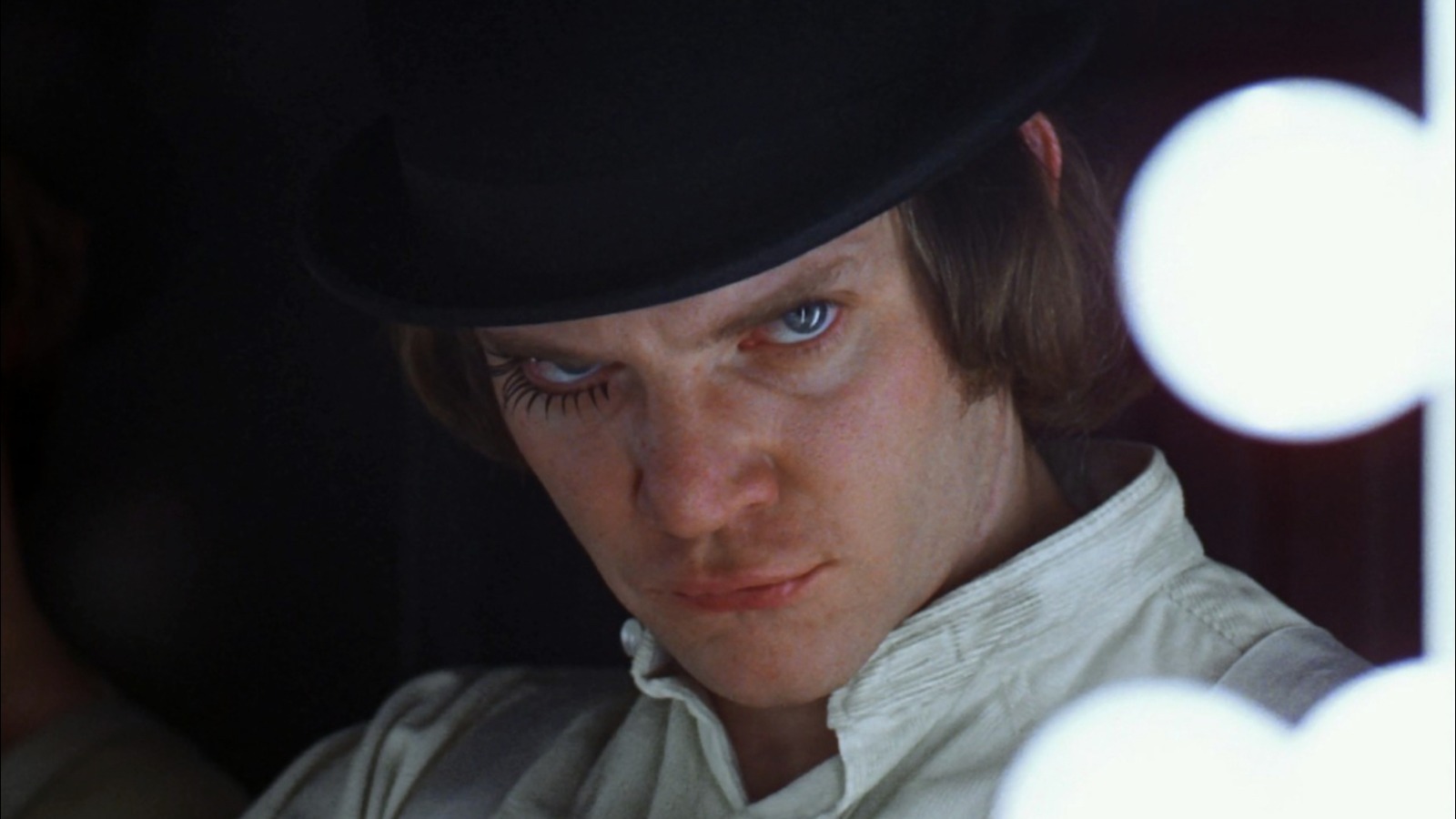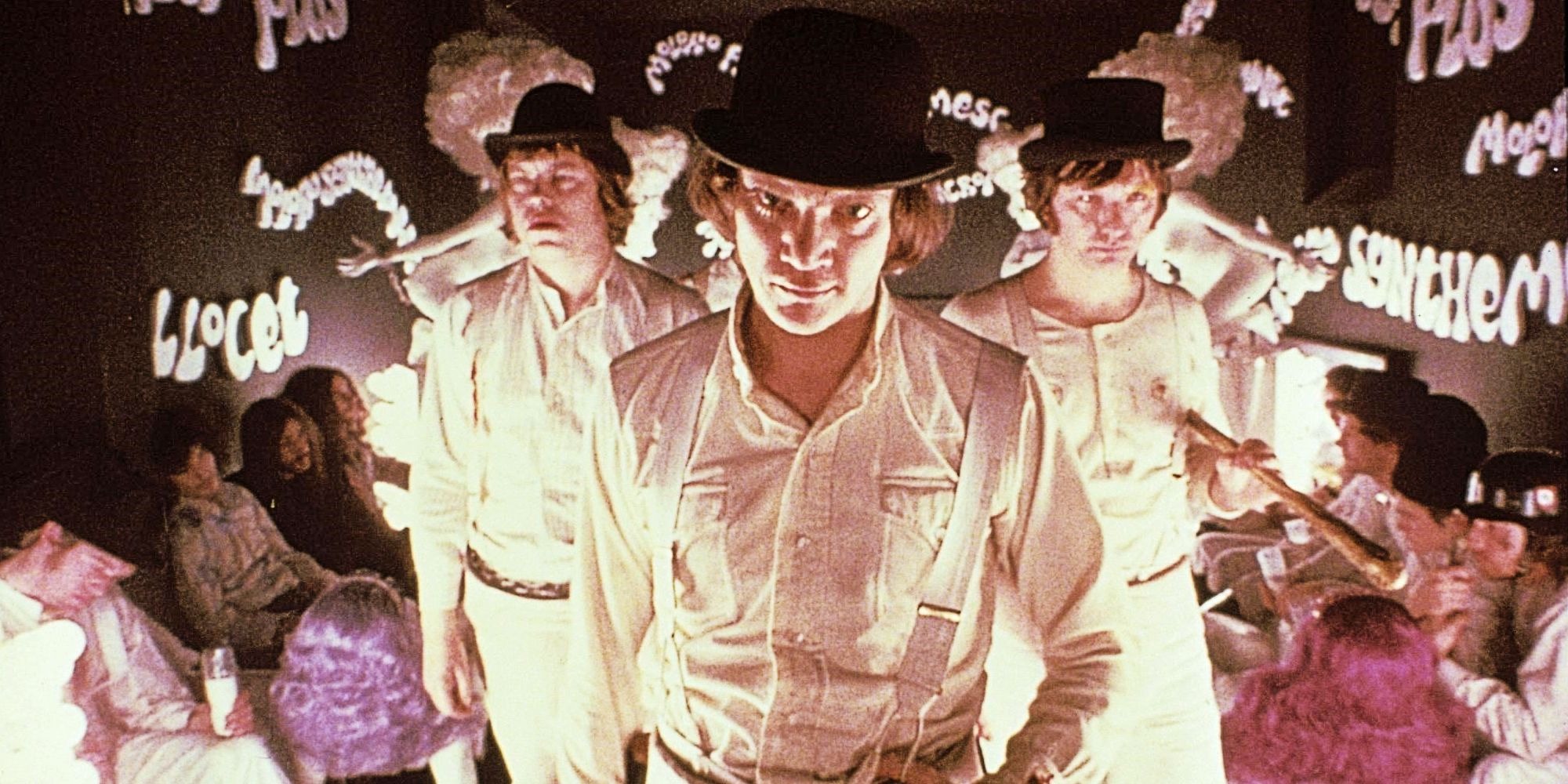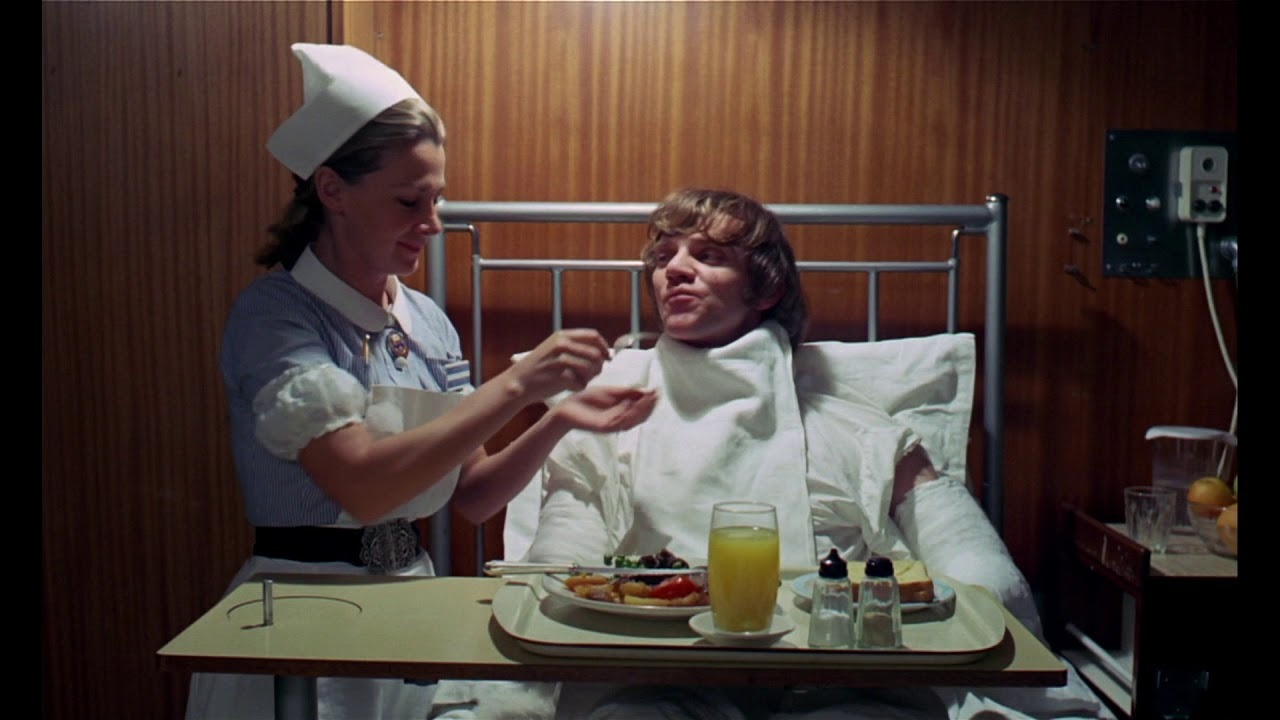Alex, a teenager shaped by a youth subculture that finds excitement in acts of violence like murder and assault, exemplifies a disturbing trend. He embodies a particular brand of “ultraviolence” that overshadows any moral compass he might possess, opting to revel in Beethoven’s music while imagining violent scenarios that culminate in ecstatic brutality.
This raises the question: what occurs when this conscious decision to embrace a morally bankrupt existence is forcibly stripped away? Burgess explores this critical conflict between choice and free will in his insightful novel, which Stanley Kubrick vividly brings to life in his acclaimed adaptation.

While Kubrick often adopts an auteurist style in his adaptations, he surprisingly remains faithful to the core of Burgess’ intricate narrative. However, he makes a serious alteration by excluding the novel’s final chapter, opting for an ending that starkly critiques the failures of the state-sanctioned Ludovico treatment.
Though Kubrick’s conclusion may serve a climactic purpose, it diverges sharply from Burgess’ original intentions. The director’s rationale lies in his belief that Alex’s genuine rehabilitation and remorse would come across as unrealistic and abrupt, undermining both the character’s arc and the thematic depth of the narrative.
Kubrick’s perspective suggests that Alex DeLarge lacks the capacity for true redemption. While this viewpoint may appear harsh, it aligns closely with the nature versus nurture debate central to “A Clockwork Orange.”
Finally, there exists no viable “cure” for someone who delights in the degradation of human life, and any attempt to condition such an individual towards compassion is destined to fail. How does Kubrick intricately weave these themes throughout the film’s narrative?
The Transformation of Innate Evil
Upon his introduction, Alex (Malcolm McDowell) presents himself as a figure of absolute authority and control. Beyond evading the repercussions of his severe offenses, he serves as the self-proclaimed leader of his gang of droogs, who share his penchant for ultraviolence, creating a toxic echo chamber of extreme maladjustment and misogyny.
In Alex’s near-dystopian reality, there is no room for tenderness; instead, violence reigns as the dominant emotional outlet, leading to rampant crime and moral decay among those in power, who are just as corrupt as the offenders they seek to control.
Although Alex is undeniably despicable, his fate becomes somewhat sympathetic when one recognizes that true reform must originate from within. Since Alex’s rehabilitation resembles a form of mind control and psychological torture, any behavioral change after treatment proves artificial and unlikely to endure.
A pivotal moment in uncovering Alex’s true nature occurs during a conversation with the prison chaplain despite a Bible study session. In this scene, he fantasizes about Christ’s crucifixion while relishing the violence inflicted from the viewpoint of a Roman soldier.
While his violent reverie may be deemed sacrilegious given the context, it also reveals a bitter honesty about his heinous inclinations. Alex embodies organic evil, instinctively drawn towards murderous impulses, and he makes no effort to disguise this truth.
This absence of social pretense almost renders him naively forthright, especially when he later informs the chaplain of his desire to be “good.” Is this an act of manipulation on Alex’s part, or does he simply lack a profound understanding of what it means to be “good”? The evidence suggests that it is the latter.
An Assault on the Senses
The sequence in which Alex undergoes the Ludovico treatment presents a striking illustration of nurture (in this case, torture) attempting to suppress nature (his intrinsic desires).
With his eyes forcibly held open, Alex is subjected to an overwhelming barrage of violence and pornography while Beethoven’s Symphony No. 9 plays repeatedly. Although he finds solace and ecstasy in associating Beethoven with his disturbed fantasies, this experience becomes a willful act.

In stark contrast, the Ludovico aversion therapy infringes upon his free will, delivering a sensory shock that conditions his mind and body to recoil at the mere suggestion of violence. This aversion proves superficial, reducing Alex to a clockwork orange—a being of organic evil forced to mechanically replicate “goodness.”
The unraveling of this façade occurs swiftly. Once declared reformed, Alex attempts to reintegrate into society, only to find himself rightfully assaulted by those he had previously tormented and nearly left for dead by former droogs who have since become law enforcers.
In a cruel twist of fate, he is saved by Frank Alexander (Patrick Magee), the very man whose home he invaded and whose wife he viciously attacked. Although Frank does not recognize him, he aims to utilize Alex’s case to contest the government.
Yet, old habits die hard: Alex, in a moment of chilling insensitivity, sings “Singin’ in the Rain,” the same tune he belted while rendering Frank immobile. Inadvertently, Alex exposes his true nature, prompting Frank to use his love for Beethoven against him, leading Alex to attempt suicide. Has Alex truly undergone a transformation?
The Decay at Society’s Core
Despite Stanley Kubrick’s departure from Anthony Burgess’ original ending, he adeptly preserves the film’s visual language and literary style. The film, which elicited polarizing reactions due to its controversial themes and depictions of violence, remarkably distances itself from the brutality at its heart.
Artistic representation rarely equates to endorsement, and Kubrick emphasizes this distinction by uncovering the narrative solely from Alex’s subjective perspective. This subjectivity is intuitively accentuated through the use of ultra-wide angle lenses, surreal imagery, and varying speeds of motion.
While “A Clockwork Orange” delves into themes of hegemonic control and surveillance, the film’s world is exclusively colored by Alex’s distorted perspective, mirroring his emotions during his questionable redemption.
In the concluding scenes, Alex is treated like a pampered child in the hospital, surrounded by government officials eager to exploit him for their political agendas. The aftermath of his fall reverses the effects of the Ludovico treatment, rendering him once more indifferent to violence.
However, the state shows no concern for his moral standing or violent tendencies, as these no longer serve their narrative. Instead, their acceptance of Alex reflects the moral decay festering within this society, where complacency and hypocrisy become essential for societal integration.
Alex, who once openly acknowledged his perversions, now resorts to concealing them while fantasizing about his debauchery, hinting that he will surely find ways to actualize these desires.



